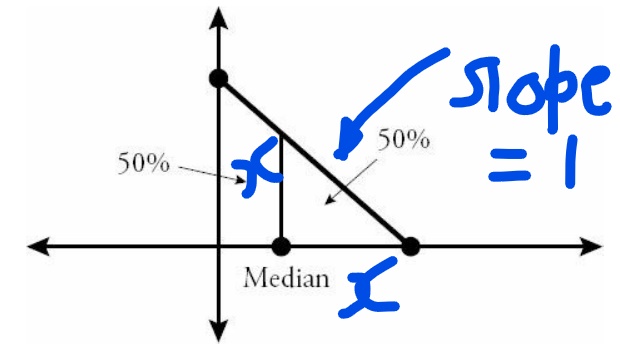
GRE Prep Club Daily Prep
Thank you for using the timer - this advanced tool can estimate your performance and suggest more practice questions. We have subscribed you to Daily Prep Questions via email.
Customized
for You
Track
Your Progress
Practice
Pays
Not interested in getting valuable practice questions and articles delivered to your email? No problem, unsubscribe here.
- Apr 25
Crafting an Impactful Resume: Balancing Detail with Brevity
10:00 AM EDT
-10:30 AM EDT
Showcase your achievements through impactful storytelling! Get ready for an LIVE session on April 25, Learn how to craft compelling narratives on your resume that resonate with admission committees. - Apr 26
Get a Top GRE Score with Target Test Prep
12:00 PM EDT
-01:00 PM EDT
The Target Test Prep course represents a quantum leap forward in GRE preparation, a radical reinterpretation of the way that students should study. In fact, more and more Target Test Prep students are scoring 329 and above on the GRE.
The random variable x has the following continuous probabil
[#permalink]
 26 Aug 2017, 01:55
26 Aug 2017, 01:55
1
Expert Reply
22
Bookmarks
Question Stats:
 25% (02:35) correct
25% (02:35) correct
 74% (01:58) wrong
74% (01:58) wrong  based on 125 sessions
based on 125 sessions
Hide Show timer Statistics
The random variable x has the following continuous probability distribution in the range 0 ≤ x ≤ \(\sqrt{2}\), as shown in the coordinate plane with x on the horizontal axis:

The probability that x < 0 = the probability that \(x > \sqrt{2} = 0\).
What is the median of x?
A. \(\frac{\sqrt{2} - 1}{2}\)
B. \(\frac{\sqrt{2}}{4}\)
C. \(\sqrt{2}^{-1}\)
D. \(\frac{\sqrt{2} + 1}{4}\)
E. \(\frac{\sqrt{2}}{2}\)
Re: The random variable x has the following continuous probabil
[#permalink]
 03 Mar 2018, 04:34
03 Mar 2018, 04:34
12
Expert Reply
A median value of any probability distribution divides the area under the probabaility distribution in two equal parts.
Best understood with following image.

Skewed.png [ 131.58 KiB | Viewed 13917 times ]
Now in our case we need to split the triangular distribution along a line \(x=?\) (parallel to y axis) such that area of the right half is same as the left half.
https://gre.myprepclub.com/forum/download/ ... iew&id=923
Area of right half = \(\frac{1}{2} \times\) Area of the larger triangle.
Now look at the figure below and we have marked out the hight and length of the triangle as x. Now height = length for this triangle because the given line has slope 1.

Inkedtriangle_LI.jpg [ 841.95 KiB | Viewed 13941 times ]
Area of right half = \(\frac{1}{2} \times x^2\)= \(\frac{1}{2} \times \frac{1}{2}\times \sqrt{2}^2\).
Solving for x we get x =1. So median value has to be \(\sqrt{2}-1\) (refer to the figure above)
Best understood with following image.
Attachment:
Skewed.png [ 131.58 KiB | Viewed 13917 times ]
Now in our case we need to split the triangular distribution along a line \(x=?\) (parallel to y axis) such that area of the right half is same as the left half.
https://gre.myprepclub.com/forum/download/ ... iew&id=923
Area of right half = \(\frac{1}{2} \times\) Area of the larger triangle.
Now look at the figure below and we have marked out the hight and length of the triangle as x. Now height = length for this triangle because the given line has slope 1.
Attachment:
Inkedtriangle_LI.jpg [ 841.95 KiB | Viewed 13941 times ]
Area of right half = \(\frac{1}{2} \times x^2\)= \(\frac{1}{2} \times \frac{1}{2}\times \sqrt{2}^2\).
Solving for x we get x =1. So median value has to be \(\sqrt{2}-1\) (refer to the figure above)
Re: The random variable x has the following continuous probabil
[#permalink]
 18 Sep 2017, 02:25
18 Sep 2017, 02:25
6
1
Bookmarks
Carcass wrote:
The random variable x has the following continuous probability distribution in the range 0 ≤ x ≤ \(\sqrt{2}\), as shown in the coordinate plane with x on the horizontal axis:

The probability that x < 0 = the probability that \(x > \sqrt{2} = 0\).
What is the median of x?
A. \(\frac{\sqrt{2} - 1}{2}\)
B. \(\frac{\sqrt{2}}{4}\)
C. \(\sqrt{2}^{-1}\)
D. \(\frac{\sqrt{2} + 1}{4}\)
E. \(\frac{\sqrt{2}}{2}\)

The probability that x < 0 = the probability that \(x > \sqrt{2} = 0\).
What is the median of x?
A. \(\frac{\sqrt{2} - 1}{2}\)
B. \(\frac{\sqrt{2}}{4}\)
C. \(\sqrt{2}^{-1}\)
D. \(\frac{\sqrt{2} + 1}{4}\)
E. \(\frac{\sqrt{2}}{2}\)
\(\sqrt{2}^{-1}\) and \(\frac{\sqrt{2}}{2}\) are the same expression. One is the rationalized form of the other. Thus they should be both right.









